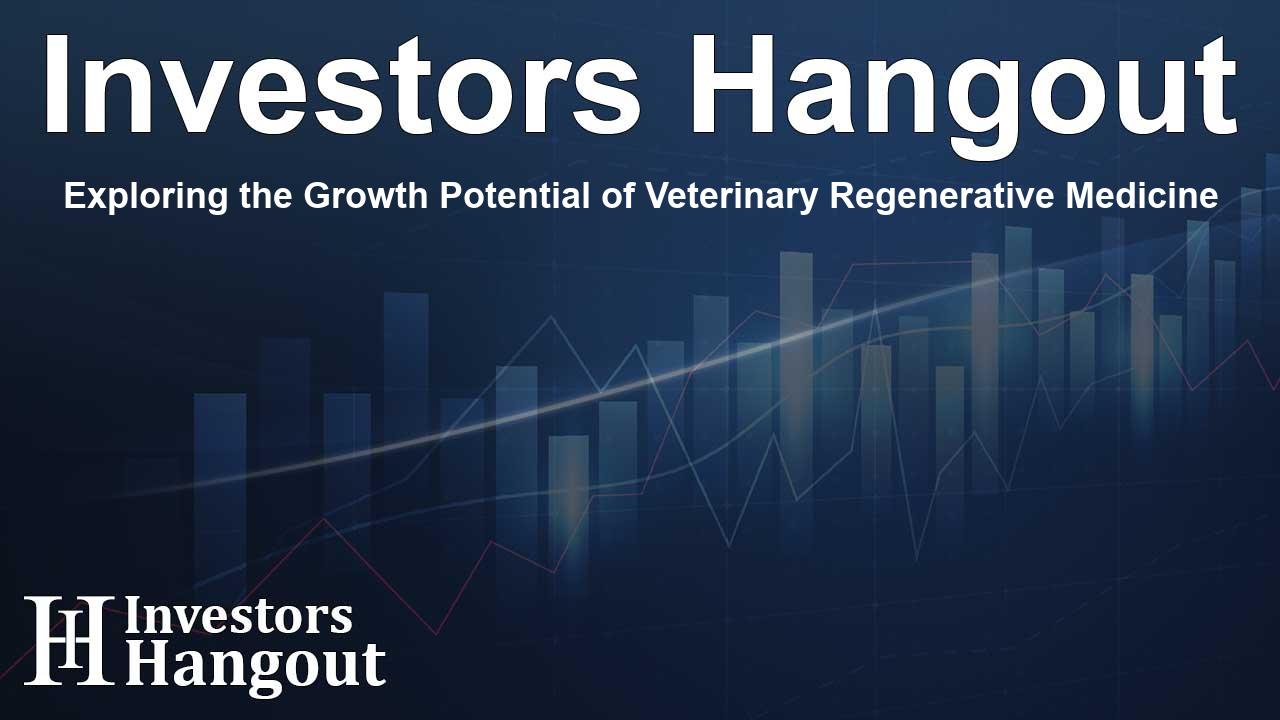Exploring the Growth Potential of Veterinary Regenerative Medicine

Understanding Veterinary Regenerative Medicine
Veterinary regenerative medicine encompasses innovative treatments aimed at restoring health in animals through advanced technologies. The market is witnessing significant growth driven by an increased demand for less invasive and more effective therapeutic options. These strategies, which focus on healing tissues and organs, are essential for improving the quality of life for animals.
Current Market Overview
Recent reports estimate that the Veterinary Regenerative Medicine market, valued at approximately USD 401.21 Million, is projected to reach about USD 1395.44 Million by 2034, growing at a remarkable CAGR of 13.23%. This growth is primarily influenced by rising awareness among pet owners and veterinarians, coupled with advancements in scientific research and treatment methodologies.
Key Market Drivers
The shift towards regenerative therapies is largely fueled by the increased pet ownership and heightened expectations regarding animal care. Pet owners are now much more invested in their pets’ health, leading to a greater acceptance of advanced medical techniques such as stem cell therapy and autologous treatments.
Technological Advances and Accessibility
Technological advancements in cell culture, tissue engineering, and the development of more accessible therapy kits are critical in making regenerative medicine widely available. Veterinary clinics are increasingly capable of processing and administering these advanced therapies, improving treatment outcomes for various degenerative conditions, including osteoarthritis and joint injuries.
Trends Shaping the Future
The market is seeing several trends affecting its trajectory:
1. Shift to Minimally Invasive Treatments
The veterinary field is adopting a more patient-centric approach, emphasizing minimally invasive treatments which reduce recovery times and reliance on traditional medications. This trend is prominently observed in treatments for chronic orthopedic conditions.
2. Personalized Veterinary Medicine
Personalized care is becoming the gold standard, focusing on therapies tailored to individual animals. This includes treatments derived from an animal's own cells, reducing the risk of rejection and enhancing healing efficiency.
3. Rising Awareness and Acceptance
Pet owners are more informed and willing to invest in their pets' health, which significantly contributes to the surge in demand for regenerative therapies. This shift is bolstered by social media and increased access to veterinary education.
The Clinical and Market Potential
Regenerative medicine holds substantial potential not just for companion animals but also for livestock. It's becoming a core part of veterinary practices, aimed at enhancing animal welfare and productivity. Stem cell therapies and related technologies provide a promising outlook for improving agricultural practices and animal health.
Emerging Markets and Opportunities
Emerging economies are also showing a growing interest in adopting regenerative veterinary practices. As regulatory frameworks improve, opportunities will expand, particularly in regions focusing on sustainable farming and ethical animal treatment.
Challenges Ahead
Despite the promising outlook, the veterinary regenerative medicine sector faces challenges. High treatment costs, inconsistent insurance coverage, and regulatory hurdles are factors that may inhibit broader adoption. Furthermore, public skepticism regarding new therapies requires ongoing education and transparency from the veterinary community.
Frequently Asked Questions
What is veterinary regenerative medicine?
Veterinary regenerative medicine refers to advanced treatments that aim to regenerate tissues and organs in animals, improving their health and wellness.
What factors are driving market growth?
Key factors include increasing pet ownership, advancements in medical technology, and a growing demand for minimally invasive treatment options.
What challenges does the industry face?
The industry faces challenges like high cost, limited insurance coverage, and regulatory hurdles which may impact market dynamics.
How is technology impacting veterinary care?
Innovations in technology are enhancing the effectiveness of regenerative treatments, making them more accessible and tailored to individual animal needs.
What is the market forecast for the next decade?
The Veterinary Regenerative Medicine market is projected to grow significantly, with an estimated value reaching USD 1395.44 Million by 2034.
About The Author
Contact Riley Hayes privately here. Or send an email with ATTN: Riley Hayes as the subject to contact@investorshangout.com.
About Investors Hangout
Investors Hangout is a leading online stock forum for financial discussion and learning, offering a wide range of free tools and resources. It draws in traders of all levels, who exchange market knowledge, investigate trading tactics, and keep an eye on industry developments in real time. Featuring financial articles, stock message boards, quotes, charts, company profiles, and live news updates. Through cooperative learning and a wealth of informational resources, it helps users from novices creating their first portfolios to experts honing their techniques. Join Investors Hangout today: https://investorshangout.com/
The content of this article is based on factual, publicly available information and does not represent legal, financial, or investment advice. Investors Hangout does not offer financial advice, and the author is not a licensed financial advisor. Consult a qualified advisor before making any financial or investment decisions based on this article. This article should not be considered advice to purchase, sell, or hold any securities or other investments. If any of the material provided here is inaccurate, please contact us for corrections.
